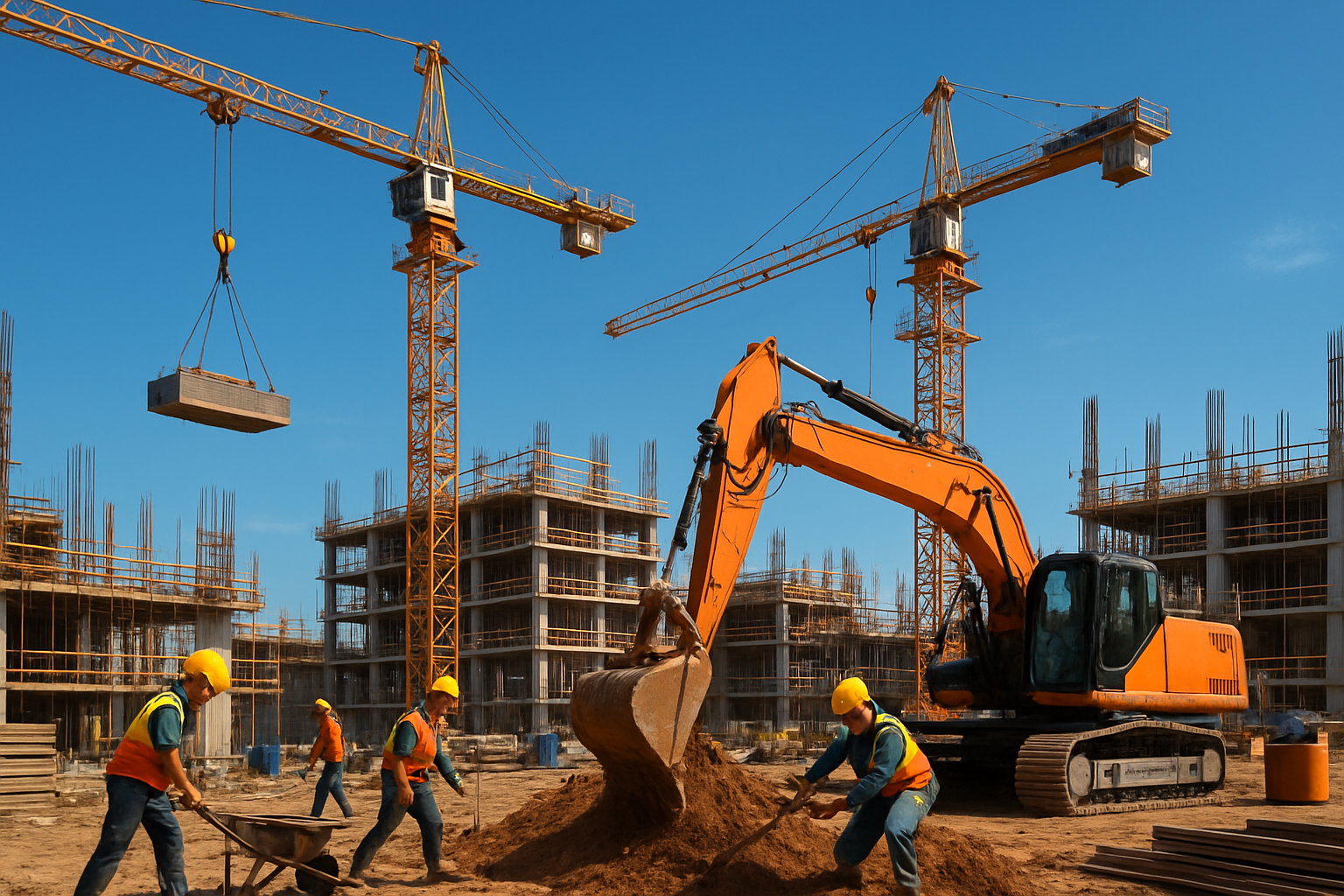Best Business Loans for Construction Companies in 2025
Why Construction Businesses Have Unique Financing Needs
Construction firms face several financial challenges that lenders scrutinize:
-
High capital expenditures for equipment, materials, and labor
-
Long project cycles with delayed payments
-
Cash flow volatility due to seasonal or project-based work
-
Heavy competition and thin margins
-
Requirements for bonds, licenses, permits, and compliance
Because of these risks, construction businesses often require specialized or hybrid loan structures. The right financing can help manage cash flow, acquire assets, or bid on larger contracts.
Top Loan Options for Construction Companies in 2025
Here are the most relevant loan categories for construction businesses:
| Loan Type | Best For | Advantages | Tradeoffs / Considerations |
|---|---|---|---|
| SBA 7(a) | Working capital, equipment, small expansions, renovations | Government guarantee, relatively low interest, flexible use of funds | Strong underwriting, documentation, and personal guarantee often required |
| SBA 504 / CDC Loans | Purchasing land, buildings, heavy fixed equipment | Long-term, fixed interest, lower down payment on qualified assets | Cannot cover working capital; limited to fixed assets |
| Equipment Financing / Leasing | Buying trucks, excavators, tools, heavy machinery | The equipment itself acts as collateral; faster approval | Depreciation, maintenance, and shorter terms can increase cost |
| Short-Term / Bridge Loans | Cover gaps between project payments or mobilization costs | Fast access to capital, flexible use | Higher interest, shorter terms, may require stronger credit |
| Line of Credit / Working Capital Loans | Ongoing cash flow needs, paying payroll or supplies between projects | Flexible draw and repayment, only pay interest on used amounts | Rates may be higher; limits often tied to revenue and credit profile |
| Invoice Financing / Factoring | Unlock cash tied up in unpaid client invoices | Converts receivables into capital, useful for contractors with long billing cycles | Costs (factoring fees) can be high; typically for B2B clients |
| Private / Hard Money / Mezzanine Financing | Unconventional deals, distressed projects, large expansions | Faster decisions, tailored structure | High cost, shorter periods, more risk exposure |
| Construction / Project Loans | Large building projects (commercial or residential construction) | Funds disbursed in stages (“draws”) as work is completed | Requires detailed plans, draw schedules, cost controls, and oversight |
Leading Lenders & Platforms for Construction Financing
Below are lenders and platforms known for working with construction/contractor clients in 2025:
-
OnDeck: Offers small business term loans and lines of credit usable for construction or contracting needs. OnDeck
-
Greenbox Capital: An alternative lender that provides construction company funding, approving some projects in as little as one business day. Greenbox Capital
-
First Bank: Offers construction and real estate financing tied to business goals. First Bank
-
Sunwest Bank: Focuses on commercial construction loans and construction-to-permanent loans for industrial, retail, and multifamily projects. Sunwest Bank
-
Citizens Business Bank: Provides flexible construction lending with customizable disbursement schedules. Citizens Business Bank
-
SMB Compass: Offers construction business loans up to $5 million, including mobilization funding and project financing options. SMB Compass
-
Clarify Capital (Construction Loans): A lender that lists short-term construction loans, SBA-backed options, and invoice factoring as ideal fits for contractors. Clarify Capital
Also, many larger banks with commercial real estate divisions (e.g. JPMorgan Chase) offer construction/permanent loan structures, especially for bigger projects. J.P. Morgan
How Rates & Terms Are Trending in 2025
-
Commercial construction loan interest rates in 2025 tend to be higher than standard mortgages, often in the 5–9%+ range depending on project risk, location, borrower credit, and term.
-
Many construction loans are interest-only during the build phase, converting to amortizing payments once the project is operational.
-
The use of construction-to-permanent loan structures is rising — where the financing converts into a long-term loan when construction finishes.
-
Private or alternative financing is becoming more common in markets where traditional lenders are cautious about risk.
How to Qualify & Strengthen Your Application
To get approved and secure favorable terms, construction businesses should focus on:
-
Strong financials & cash flow history
Ensure you have clear P&L statements, balance sheets, and tax returns for past years. -
Solid credit scores
Both business and personal credit may be evaluated. -
Backlog and contracts
Show signed contracts, bids, or proof of secured work pipeline. -
Collateral & equity
Offer equipment, property, or other assets to secure the loan if necessary. -
Detail project plans & budgets
Provide clear construction plans, cost breakdowns, schedule, and contingencies. -
Demonstrate experience
Lenders prefer contractors with a track record in the type of construction you’re doing. -
Use draw schedules and manage disbursements
Show how and when funds will be released based on milestones. -
Partner with experienced construction lenders or brokers
They understand industry risks and know how to present proposals effectively.
Example Use Cases & Loan Selection
-
Buying heavy equipment (e.g. cranes, bulldozers): Use equipment financing or leasing.
-
Building a new office or warehouse: Use construction loan + convert into permanent financing (such as 504 or CRE mortgage).
-
Funding cash flow between project payments: Use a working capital line of credit or invoice factoring.
-
Starting a small project or short-term job: Use short-term or bridge loans, possibly with faster underwriting.











